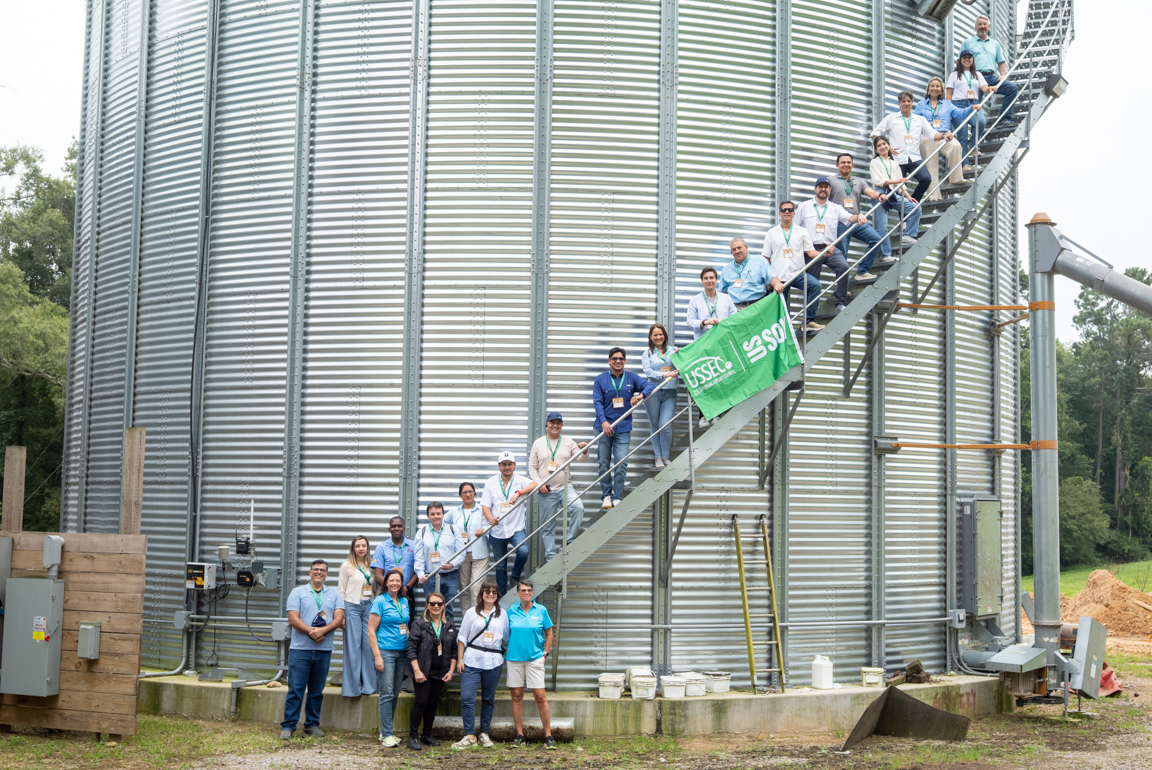Soy Excellence Centers Provide Training, Build Protein Value Chain

Traditional programming provided by the U.S. Soybean Export Council (USSEC) and current programming by the World Initiative for Soy in Human Health, more commonly known as WISHH, target today’s management and today’s decision-makers, shares Paul Burke, a senior director for USSEC.
Together, USSEC and WISHH, a subsidiary of the American Soybean Association, provide a one-two punch when it comes to marketing U.S. soybeans around the world. WISHH specializes in building markets in areas that import little-to-no U.S. soybeans, taking growth potential into account. Thanks to WISHH, progress has been made in Tanzania, Nigeria and Cambodia. Meanwhile, USSEC specializes in more developed markets such as China, Thailand and Ecuador, as well as growing markets in the Middle East and North Africa.
“USSEC and WISHH work with decision-makers, inviting them to consider how soy — especially that from the United States — can help their business,” Burke explains. “We launched the Soy Excellence Centers to really focus on that next generation of leaders, and we are creating a community in the protein value chain of people eager for continuing professional development and engagement with the U.S. Soy industry.”
It’s through the exchange of ideas, science and on-the-job expertise that the Soy Excellence Centers (SECs) work to support growth for the food and agricultural sectors in each region.
“Our target audiences are those working on poultry and aquaculture farms — people in the workforce, not management,” he says. “We are working to provide them with more information and more knowledge on how to manage a poultry operation, aquaculture operation or feed mill.”
Sogaolu Ayodeji, an SEC program participant from Nigeria, looked to the SECs to further his career.
“When I saw the course outline, I smiled because it was everything I needed to help my knowledge of the business,” he says. “It was everything for me — the whole package in one.”
Soy education
The SEC curriculum focuses on building career paths in the protein value chain, exposing students to a range of required skills and knowledge. Furthermore, the training programs are organized into sector-specific, track-based curriculums.
These include poultry production, feed milling and aquaculture, with plans to add crush plant operations as well as other protein market areas, such as swine production.
The curriculum is organized into basic and intermediate training modules, allowing participants to build a foundation of knowledge and increase their understanding as they progress. Flexibility in the curriculum provides a customized education with elective topics that help meet local needs. After completing the curriculum, SEC graduates earn training certification. The SECs have a long-term aspiration to provide a “Distinguished Professional” recognition level to highlight trainees who complete a series of advancement exams and an advanced case study module.
“Certifications are much more valuable in these emerging markets where the opportunity for training and education is limited,” Burke says. “When participants can show the accumulation of more continuing education, it is extremely valuable in those environments.”
How the SECs got their start
In 2017, the checkoff invested in a study on how programming should be organized to maximize profits for U.S. soybean farmers from export demand. That study indicated the U.S. soybean industry needed to increase and target its investments toward emerging and expansion markets.
Then, in 2018, trade friction between China and the United States validated the study’s findings and drove USSEC to seek ways to diversify the markets served by U.S. soybeans. The concept of the SECs was developed as part of this diversification strategy and to forge relationships with tomorrow’s leaders in the protein value chain.
USSEC leveraged soy checkoff funding to invest in this ambitious global project. Four years later, the SECs have already exceeded their foundational goals.
“With a focus on building these long-term relationships and creating an affinity for U.S. Soy, we are working to increase total soy usage in target markets,” says Burke, noting that 2020-21 was a record-breaking year for U.S. soybean exports.
To date, four regional SECs have been established.
- Egypt hosts training for the Middle East and North Africa in collaboration with Cairo University and WorldFish.
- Thailand and Singapore host training for South Asia and Southeast Asia in collaboration with TetraPak and Kasetsart University.
- Nigeria hosts training for Sub-Saharan Africa in collaboration with Premier Agribusiness Academy and the International Institute of Tropical Agriculture.
- Honduras hosts training for the Americas in collaboration with Kansas State University and Zamorano University.
Building the future now
Beginning in early 2022, USSEC will roll out an online community-based platform that will bring participants together to network with other participants from their regions and with SEC course instructors and program leaders.
“We have several thousand people who have become certificate holders during the past two years,” Burke adds. “Now we need to invite them into the community.”
The community is another effort to build a preference for U.S. soybean by allowing those who have received certification and have excelled in the program to attend virtual events sponsored by USSEC. Burke says in the future, there may also be opportunities for a select few participants to participate in regional and extended learning events and farm tours in the United States.
“As we tap that next generation of leaders and decision-makers, we believe that promoting education and excellence in emerging markets is a first step toward creating the stability needed to provide a launchpad for prosperity around the world,” Burke says.



